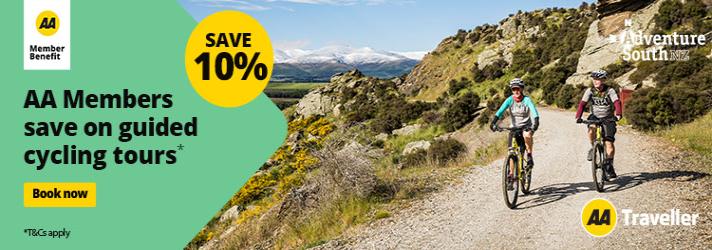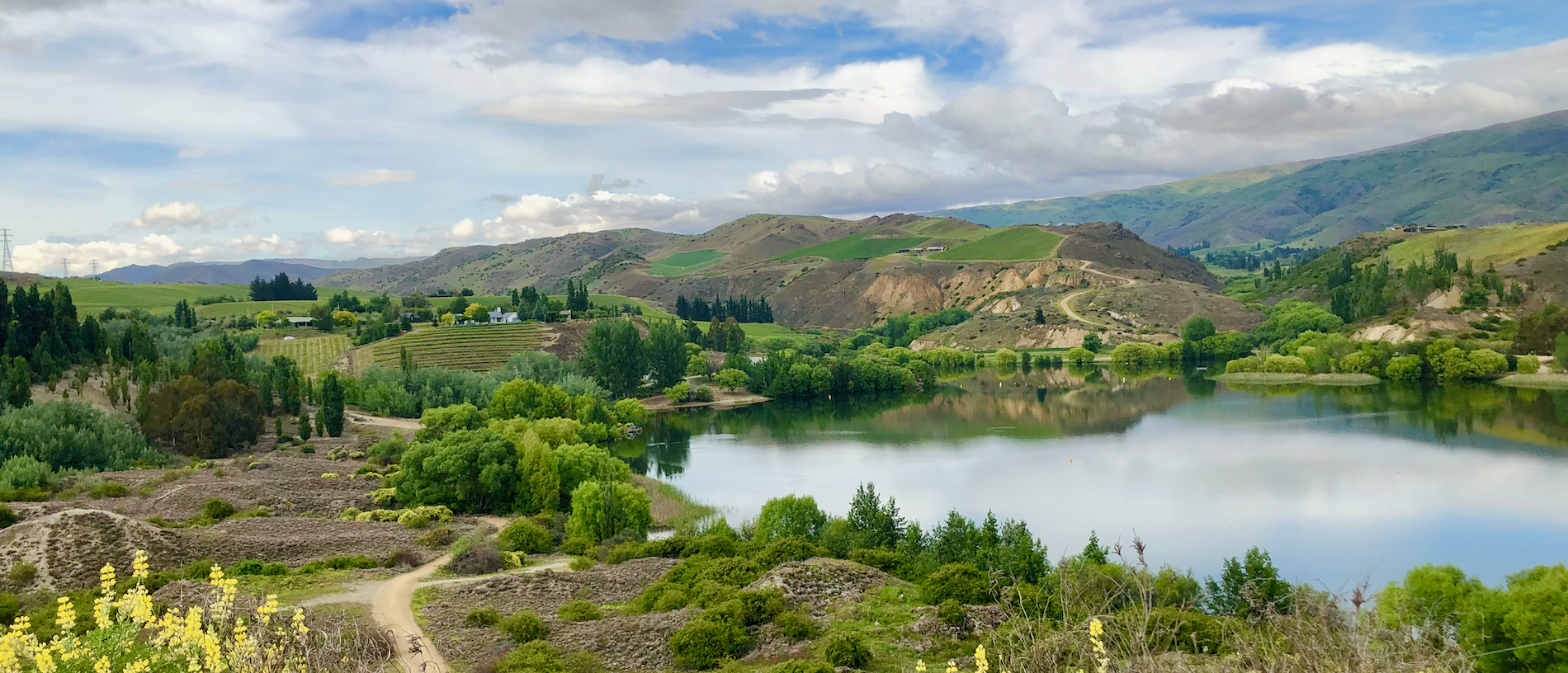
Lake Dunstan and Three Gorges Cycling Tour
The lake surprised me. It was longer than I’d imagined and shone with a surreal quality in the morning sun, its glossy surface mirror-like; the background mountains, scraped by the weather, seemed to hover.
This new perspective of Lake Wānaka was due to my transport mode. I was cycling its shoreline, taking my time and being given, in return, a rewarding reveal.
The day before, the first of the five-day tour, was our warmup. We’d found trails on the outskirts of Queenstown to get used to the e-bikes with their pedal-assist batteries, their gears and their boost functions. Then our guides, Howie and Sam, had driven us and our bikes over the Crown Range, through empty, golden hills spotted with tussock, to lunch at the famous Cardrona Hotel.
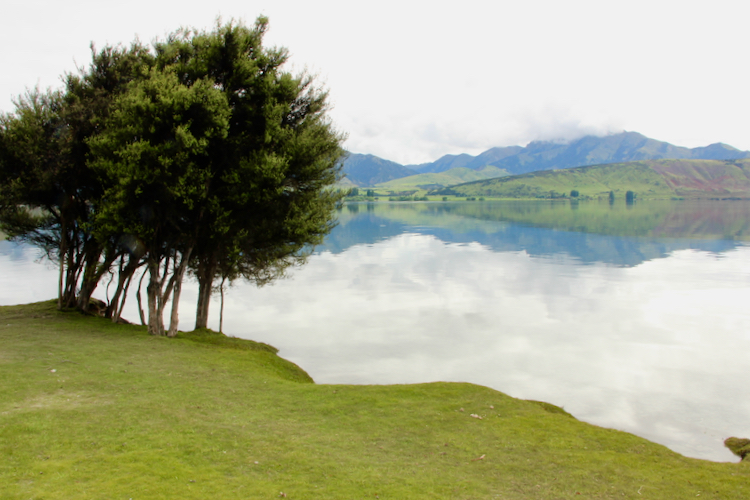
By late afternoon we were in Wānaka, in a suite looking over the lake, happy to relax for a while in the resort’s spa before ambling into town for dinner with the crew. Our group of a dozen cyclists, mostly Kiwis, one Australian couple, were friendly people, and laughter around the table boded well for the rest of the tour.
The next morning we rode along the lake edge, along the Outlet Track’s boardwalks and smooth paths, past where the grebe / pūteketeke nest, toward Albert Town.
It was that end of Lake Wānaka I’d found particularly tantalising. The glassy, shining water was hypnotising. I wanted to sit and stay, witness the spectacle of clouds and mountain flanks reflected almost perfectly in the lake’s surface.
But it was only mid-morning and there were many more kilometres to ride. From Albert Town we segued to the Hāwea River Track, another very scenic and easy stretch. The perfumes of wild thyme, lupins and flowering cabbage trees were interrupted now and then by strong whiffs of rabbit.
To get to the start of the Lake Dunstan Trail we drove a short way from our Hāwea lunch stop, then jumped back on our bikes to ride a lake-edge path made extra pretty with lavender, lupins, bright orange and yellow poppies and dark pink and crimson wildflowers we couldn’t agree on the name of.
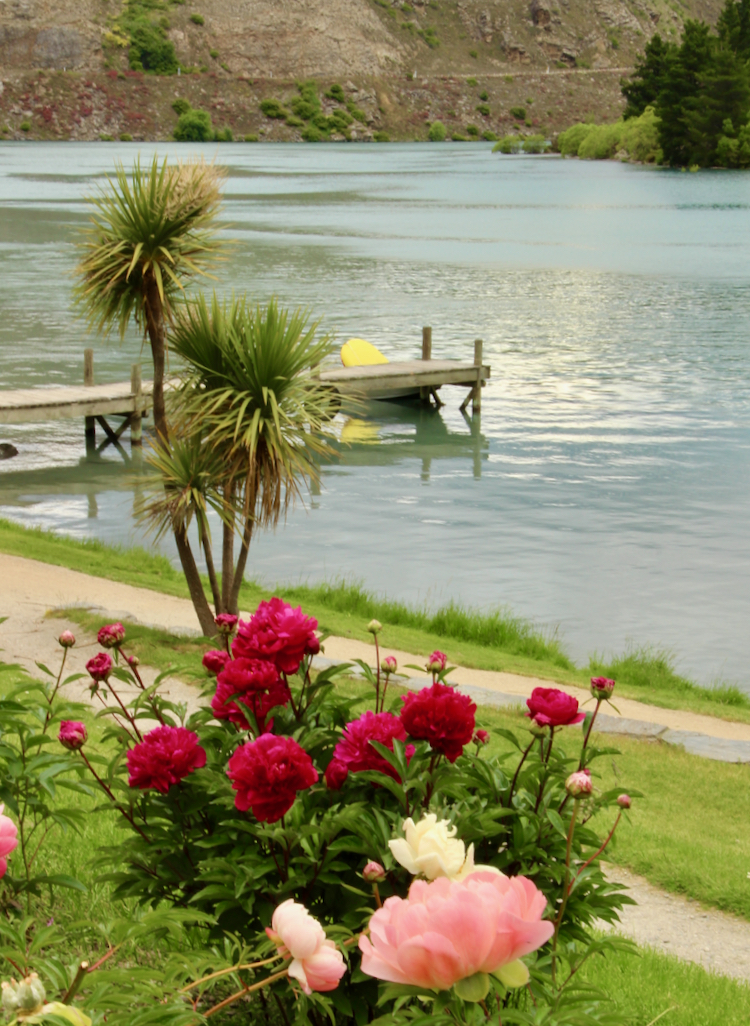
At its far end, the shore of Lake Dunstan is dotted with homes taking advantage of small human-made bays with willows and grassy banks, the cycle path winding around them, between the lawns and the lake. It was heartening to encounter local cyclists and walkers on the trail and to see families at the lake edge with kayaks and picnics. There was a healthy, content vibe of people enjoying life.
At Cromwell’s heritage precinct we wandered through enticing art galleries and boutiques before riding to a motel for the night, past gardens bursting with roses and peonies.
Re-joining the path in the morning we cycled the edge of Lake Dunstan under wide muted skies and vibrant bird song. The reflections in the lake were magical, like projected replicas of the surroundings but with a painterly skin.
The path – comfortable, crunchy under our tyres – meandered and eventually wound tighter up to the Bannockburn Inlet, an elbow in the lake. There was joy in riding, gliding fast, then climbing for big glorious views back toward Cromwell.

The section between there and Clyde was the trickiest but the most spectacular, too. Parts of the path are cantilevered over the lake, hanging on to the sheer cliff edge as if by magic (but in reality, thanks to some impressive engineering). Zig-zagging switchbacks lead uphill and downhill, and particularly steep bits referred to as ‘ladders’ included some hairy terrain. In some places the skinny path dropped away, steep rock rose on the other side and there was pressure to always keep left but, fortunately, there was little oncoming traffic.
We were immersed in Central Otago, delivered to landscapes you might drive through and, looking at from a distance, wonder about. But we were in it.
At Clyde we had a hearty lunch before following the pretty path down the river to Alexandra – an adventurous track which encouraged real riding, past willows dipping their fingertips into the fast-moving Clutha Mata-Au River.
We road back to Clyde via a stretch of the Otago Central Rail Trail to end a long, varied and satisfying day. The historic Clyde Lodge provided our beds that night, crashed into with relief after a wine tasting at Clyde Village Winery and dinner in town.
The next leg saw us tackle the Clutha Gold Trail from Lawrence, ending at Pinder’s Pond near Roxburgh with intention of finishing the last of it the following day. Through Gabriels Gully we ventured onto a straight ex-railway path that soon swerved into more picturesque trail riding under corridors of trees on riverside paths dappled with morning sun.
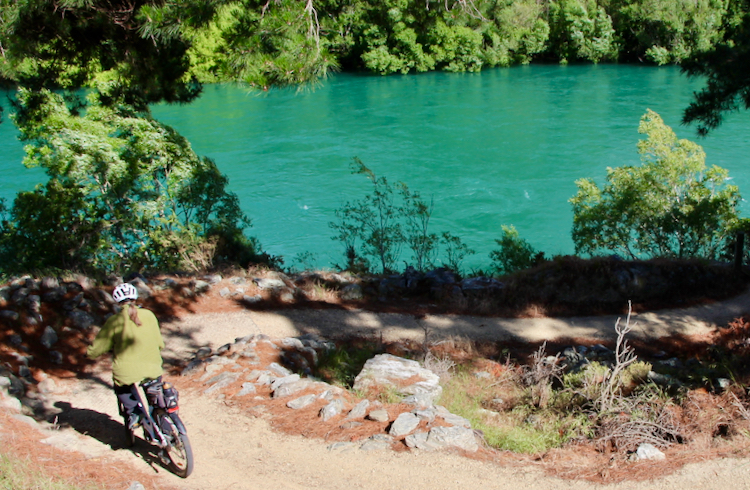
We’d been through a long tunnel, through Big Hill, and more hills followed but they were all quite manageable. Through gullies, past farms, along riverside paths we rode, mesmerised by the rushing, wide blue-green current, energised by the constant turmoil under the river’s skin.
On a river flat, where the trail met the road, we met the support bus with its cargo of morning tea just in time for the only rain of the tour; half an hour of cold, sharp, stinging drops. It was comforting to know we had the option of putting our bikes on the trailer and seeking shelter in the bus if the rain had persisted.
After a night in Roxburgh, we were dropped back at Pinder’s Pond for our last day of the tour. The riverbank trail was a thin line of pale earth through reddish pine needles made by many bikes which had recently ridden it.
Having scattered along the trail, we gathered again at the base of Roxburgh Dam before cycling uphill to cross the dam and to a path beyond. All the way along and down, with several assertive downhill switchbacks, which we were all used to tackling by now, we had constant dramatic views of Roxburgh Gorge.
We spread back out for the last ten kilometres, enjoying the isolated landscape on our own. The trip finished with a jet boat ride. Bikers and bikes piled onboard for a zoom upriver to Doctor’s Point, 15 kilometres away.
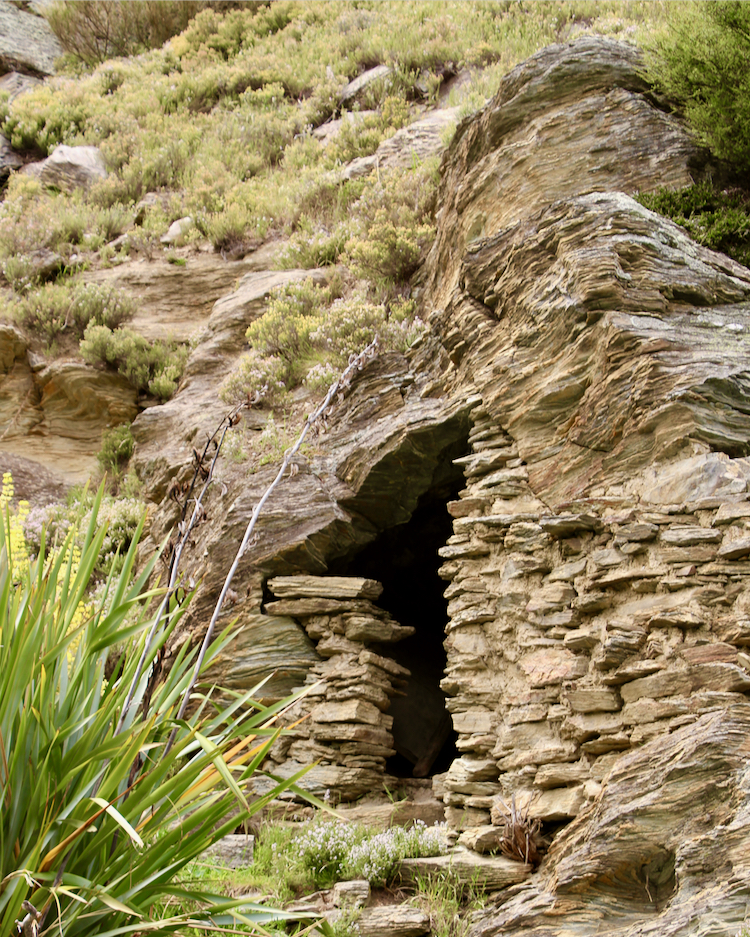
Captain Dave gave us insights into the history of the land as we passed by, including the remains of several Chinese gold miners’ huts made from stacked stones, tucked under overhangs, hanging onto barren rocky flanks sloping down to the river. They’re still standing, 150 years on, impressive testaments to very harsh times in this extreme place.
We rode the last bit into Alexandra, had lunch in the shade then shuttled back to Queenstown, happily exhausted, pointing out the window at paths we’d ridden over the past few days, waving at other cyclists in the midst of their own journeys.
Story by Kathryn Webster for the Autumn 2023 issue of AA Directions magazine.

